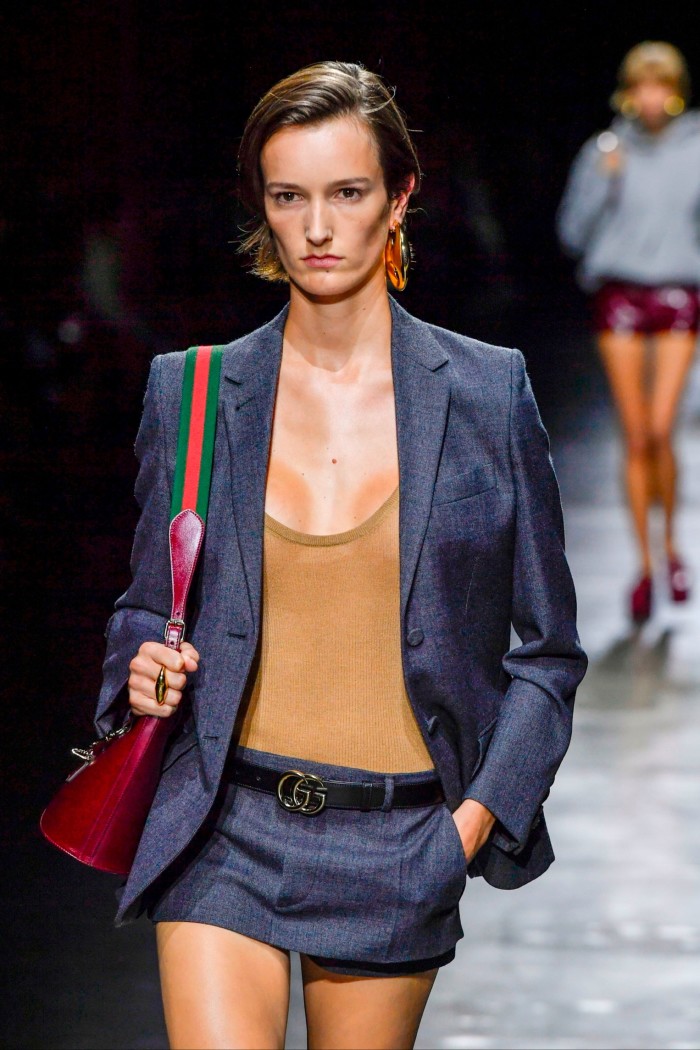


Stay informed with free updates
Simply sign up to the Life & Arts myFT Digest — delivered directly to your inbox.
I have a lot of sympathy for José Luis Sanz, the recently elected mayor of Seville who has declared a war on nudity. In a law announced this week, his city council will ban the wearing of costumes “that may violate the moral or sexual integrity of another person”, including wearing “underwear or costumes using sexist elements or messages”. It will also forbid “acts of obscene exhibitionism”.
The laws are an attempt to counter the stag-party culture that has found increasing hordes of revellers wearing inflatable penis hats and slogan boxers on its streets. Similar efforts have been enacted in Málaga and Mojácar also, while a host of other European cities have issued restrictions to limit the diaspora of bare-assed bachelors and brides.
Good luck trying to enforce it, though. Right now, it seems, the nips are out of the bag.
Nudity is no longer reserved for saunas, locker rooms or the garden: in 2023, everyone is letting it hang out. As dress codes become casualised to the point of looking slovenly, many are now comfortable wearing little more than underwear. I’ve just returned from watching a month of fashions that will appear next spring. And the most consistent trend I’ve witnessed has not been clothes, but rather the lack of them.
Miuccia Prada set the mood at Miu Miu, in October 2021, when she debuted a micro-skirt that barely grazed the buttocks and was worn with a cropped top. The skirt went viral on social media, and almost every fashion house now offers some variant on the theme. In a step further, last season, Mrs Prada dispensed with any “bottoms” and sent out her models in sparkly knickers worn with £7,000 Nappa leather blazers. The look may have raised eyebrows, but the underwear as outerwear trend has since taken hold across the board: new designer Sabato De Sarno made micro skirts and sparkly bras a mainstay of his first show at Gucci, while at Stella McCartney the shorts were so short I could have offered some of the models a full gynaecological report.


But it’s not all about the bum in fashion. There are bountiful boobs as well. Transparency has been chief among the trends for 2024; after Milan, I lost track of the nipple count. And not just on the catwalk: in New York I had a meeting with a designer whose unsheathed bosoms kept escaping from her top. She dealt with it with such blithe nonchalance I assumed this was just the way she dressed. Another fiftysomething editor told me she’s taken to naked dressing to deal with her “mid-life” angst. Last week she went out in a bra-top: “I felt like Madonna,” she enthused about her newfound nakedness. “And it felt great.”
Is this the result of Free the Nipple, the social-media campaign that started back in 2012? The moment ignited a debate about what women wear in public and acted as a counter to the somewhat prudish habit, employed by Facebook and other social media platforms, of blocking women who “violate” its guidelines.
Yet fashion is hardly a forum in which feminist ideas are much exalted. Watching dozens of emaciated, barely breasted, half-naked young women walking the runway felt less an expression of emancipation than a reflection of an industry that still regards models as little more than bits of meat. I was also reminded of the cross-brand charter created in 2017 that was designed to protect a model’s wellbeing. Co-signed by both Kering and LVMH, the initiative requires casting directors to “ensure the care of models”, making it “incumbent upon the brands to put a dedicated psychologist/therapist at their disposal during their working time”.
I’m not saying that models mind getting their boobs and bums out on the catwalk and having those images broadcast around the world. While I am more comfortable with the underpinnings of a demure Victorian sensibility, I recognise that I may well be a minority. Neither could I say the vogue for nudity was the product of a male gaze: male designers still make up the majority of fashion houses, but some of the most naked collections were created by females.
Nudity is trending among both boys and girls. Men routinely went shirtless during last week’s heatwaves on the streets of Paris, while gauzy undergarments are as common on the subway as they are on the front row.
Maybe we can blame global warming — as soaring temperatures push the wardrobe to far extremes. Speaking to The New York Times last summer, George Havenith, a professor of environmental physiology at Loughborough University, observed: “Bare skin . . . tends to make quite a bit of difference” when dealing with annihilating heat.
It poses further conundrums in the office, where the subject of nudity is twisting HR departments into all sorts of amusing knots. Pity the grey, male desk manager who might want to tell his young intern to put her bits away: especially in an international office where cultural attitudes to nudity shift wildly between the different hemispheres. As a young journalist I was regularly teased by my then boss about whether I had forgotten to wear trousers. I didn’t give a monkey’s, but such Daniel Cleaver-esque sexual banter is now much frowned upon.
Buoyed by all these boobies, however, I have taken some inspiration from the female icon Bridget Jones. Last week I wore a transparent top to the Élysée Palace for a presidential dinner. OK, I covered up with a tuxedo, but what the hell, I figured. When in France . . .
Email Jo at jo.ellison@ft.com
Find out about our latest stories first — follow @ftweekend
[ad_2]
Source link